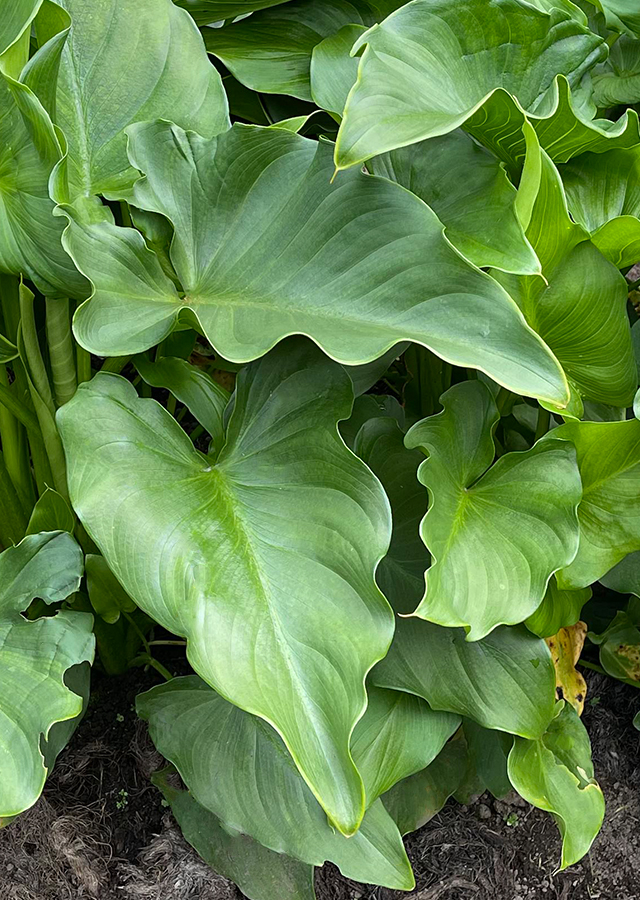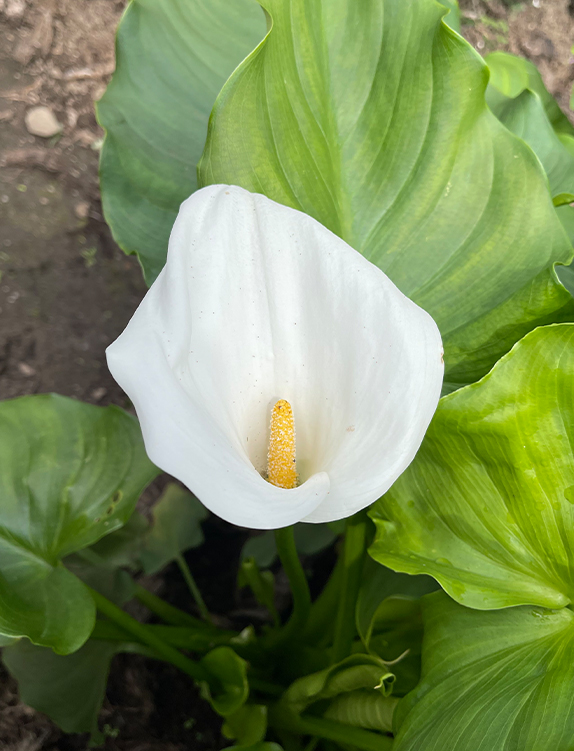Traditional Herbs from Zantedeschia aethiopica
treat_boils
- Take a piece of calla lily leaf, wash it until clean.
- Wrap the leaf on the sore area.
treat_asthma
- Take enough calla lily rhizome, wash it until clean.
- Boil until it boils .
- Let it warm/cold.
- Strain and add enough honey then drink.
What is Zantedeschia aethiopica Looks like??



Parts of Zantedeschia aethiopica that could be used
- Leaves", "Roots", "Stems", "All Parts of the Plant", "Rhizomes
Zantedeschia aethiopica Distribution
Calla Lily or Zantedeschia aethiopica is a flowering plant from the Araceae family originating from Lesotho, South Africa and Swaziland. The genus name was given in honor of Prof. Giovanni Zantedeschi, an Italian botanist and physician. The species name "aethiopica" is indirectly related to Ethiopia as in classical times, it was used to refer to the "south of the known world", namely Southern Libya and Egypt, now known as South Africa. This species has been naturalized in Australia, Brazil, Hawaii, India, Italy, Kenya, Malawi, New Zealand, the Philippines, Portugal, Réunion, South America, Spain, Tanzania, Tunisia, England, and Zambia. Z. aethiopica is also cultivated commercially as an ornamental plant and cut flower in Africa, Asia, Australia, Europe and the United States. In South Africa, Z. aethiopica is a valuable medicinal plant species also considered an important component of indigenous pharmacopeias in Brazil, India, Malawi, Mexico and Tanzania. This species has been used as a herbal medicine for 33 human diseases in tropical Africa, Asia, and North America. In addition, Z. aethiopica also has value for cleaning contaminated soil and water and as an important food ingredient. The leaves and stems of Z. aethiopica can be consumed as a leafy vegetable, but it is not recommended to be consumed fresh or raw, but must be cooked first, because this species contains needle-shaped calcium oxalate crystals which cause irritation, swelling of the tongue and throat, nausea, vomiting, and diarrhea. Cooking it can remove the calcium oxalate content in it. Z. aethiopica leaves are included in the top 10 plant species causing poisoning cases in the Johannesburg city area, South Africa and are one of the most common poisonous plants in New Zealand.Agroecology of Zantedeschia aethiopica
In South Africa, Z. aethiopica has been recorded as growing in sandy or rocky areas, streams, along coasts, mountain grasslands, at altitudes ranging from 20 m to 2,250 m above sea level. Its growth likes damp places and lots of water.
Morphology of Zantedeschia aethiopica
- The roots are contractile (appear from the top of the stem tuber and between the leaves). The roots are white, fleshy, the rhizome is thick.
- The stem grows upright, round, soft, not woody, about 30 - 60 cm long. Parts of the stem under the ground thick.
- Leaves are dark green, shiny, fleshy, large, rough and hairless, oval or ovate-cordate or like an arrowhead, with a pointed leaf tip Parallel-pinnate, characterized by thick, spongy petioles.
- Monoecius flowers, funnel-shaped narrowing towards the tip from the spathe) which is bright yellow.
- The fruit is like a small berry and is numerous, round in shape, grows at the base of the spadix. The fruit is tapered to the base, green in color and turns orange when ripe.
- Seeds starchy subglobose or ovoid, numbering 1-12.
Cultivation of Zantedeschia aethiopica
Plant propagation through seeds and separation of clumps.
Zantedeschia aethiopica, more details :
Chemical Content of Zantedeschia aethiopicaAnthraquinones, cardiac glycosides, flavonoids, saponins, steroids, sucrose, tannins, terpenoids, cytokinins, cycloartane triterpenes, galactolipids, galactosyldiacylglycerol, phytosterols.
Benefits of Zantedeschia aethiopica
Treats boils, burns, gout, inflammation, insect bites, rheumatism, scabs and wounds, treats respiratory problems (including asthma and bronchitis), colds, flu, headaches, heartburn, infections, infertility, sore throats, reduces fever. Has activity as an antibacterial, antifungal, antithrombotic and anticoagulant, antioxidant and antihistamine.
Simplisia of Zantedeschia aethiopica
Another Facts for Zantedeschia aethiopica :
Synonym of Zantedeschia aethiopicaCalla aethiopica L., Calla moschata Moench, Colocasia aethiopica (L.) Link
Habitus of Zantedeschia aethiopica
Herb. An evergreen, clump-forming annual herb that can grow up to 150 cm tall
Habitat of Zantedeschia aethiopica
- Wetlands", "Riverside", "Coast", "Grasslands
No comments:
Post a Comment